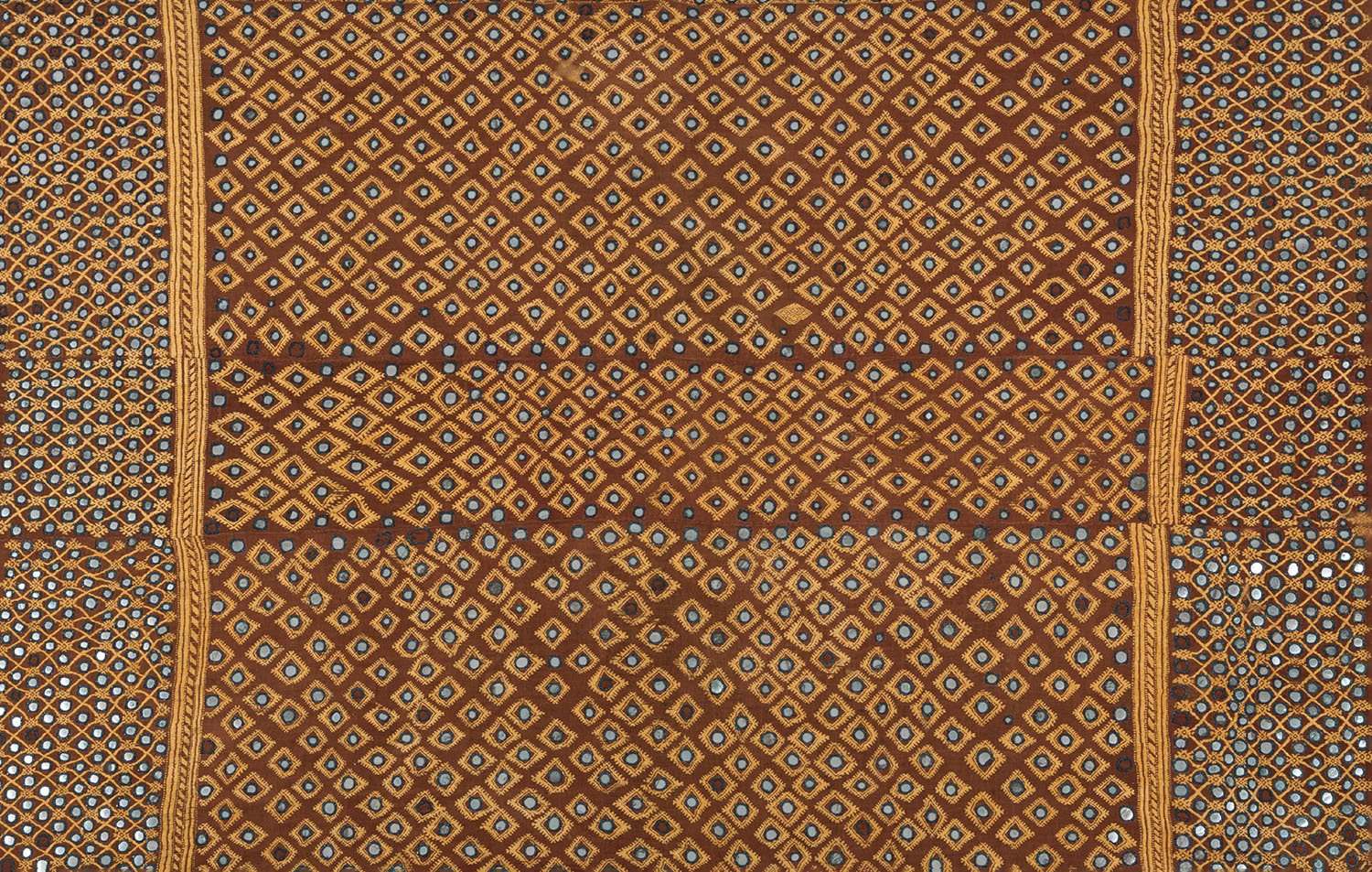ARTICLE
Shishedar Phulkari
A type of phulkari embellished with sheeshe (small, dull pieces of glass) that are stitched in patterns across the fabric, the shishedar phulkari acts as a nazarbuti for the wearer. While nazarbutis in other phulkaris are typically presented as interruptions in the embroidery pattern, the glass pieces in shishedar phulkaris are a way of incorporating the motif into the overall design.
Shishedar phulkari shawls and odhinis are typically embroidered with geometric patterns in white or yellow thread against a dark red or brown base. Like other phulkaris, the shishedar type originated in Punjab, before the Partition.
Today, it is most commonly made and worn in Haryana, particularly in Gurugram, Rohtak, Hisar and neighbouring New Delhi. Examples of older shishedar phulkaris can be found in several private and museum collections, most notably the Jill and Sheldon Bonovitz Collection at the Philadelphia Museum of Art.
Bibliography
Our website is currently undergoing maintenance and re-design, due to which we have had to take down some of our bibliographies. While these will be re-published shortly, you can request references for specific articles by writing to hellomapacademy@map-india.org.







